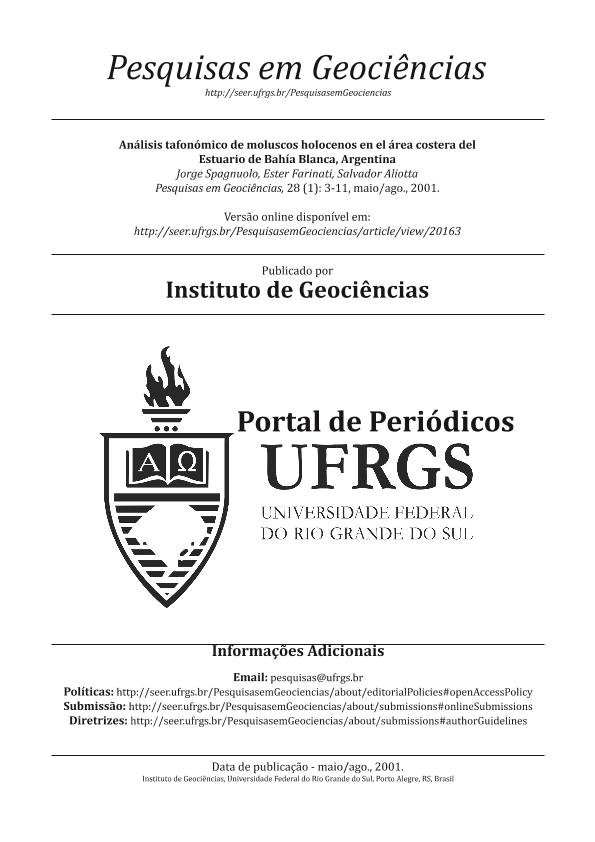Artículo
Análisis tafonómico de moluscos holocenos en el área costera del Estuario de Bahía Blanca, Argentina
Fecha de publicación:
07/2001
Editorial:
Universidade Federal do Rio Grande do Sul. Instituto de Geociências
Revista:
Pesquisas Em Geociencias
ISSN:
1518-2398
Idioma:
Español
Tipo de recurso:
Artículo publicado
Clasificación temática:
Resumen
At the south west of the Buenos Aires province, Argentina, on the northern coast of the Bahia Blanca Estuary, sand—shell ridges suboparallel to the coastline generated during the Holocene transgression-regression were deposited. These structures are composed mostly of coarse to medium sand and a high proportion of molluscs shells (19 species of bivalves and 16 species of gastropods). For this study three taxa from the fossil association located in the ridges (Brachidontes rodn'guezi. Tegula patagonica and Crept'dula aculeata) were selected and the mechanisms of taphonomic alteration that affected them were qualified. By means of ternary taphograms the variation of five taphonomic attributes (bioerosion. encrustation. fragmentation, wear and dissolution) was established. It has been determined that the bioestratinomic processes are subordinated to the fossildiagenetic mechanisms, where dissolution has left a series of taphonomic signatures. Based upon the taphonomic attributes of the fossil association a high stand sea level cycle with an important contribution of storm waves that afi'ected the biogenic production area were established as a representation of the paleoenvironmental evolution.
Palabras clave:
Tafonomia
,
Moluscos
,
Litoral
,
Cordones Holocenos
Archivos asociados
Licencia
Identificadores
Colecciones
Articulos(IADO)
Articulos de INST.ARG.DE OCEANOGRAFIA (I)
Articulos de INST.ARG.DE OCEANOGRAFIA (I)
Citación
Spagnuolo, Jorge Osvaldo; Farinati, Ester Amanda; Aliotta, Salvador; Análisis tafonómico de moluscos holocenos en el área costera del Estuario de Bahía Blanca, Argentina; Universidade Federal do Rio Grande do Sul. Instituto de Geociências; Pesquisas Em Geociencias; 28; 1; 7-2001; 3-11
Compartir




